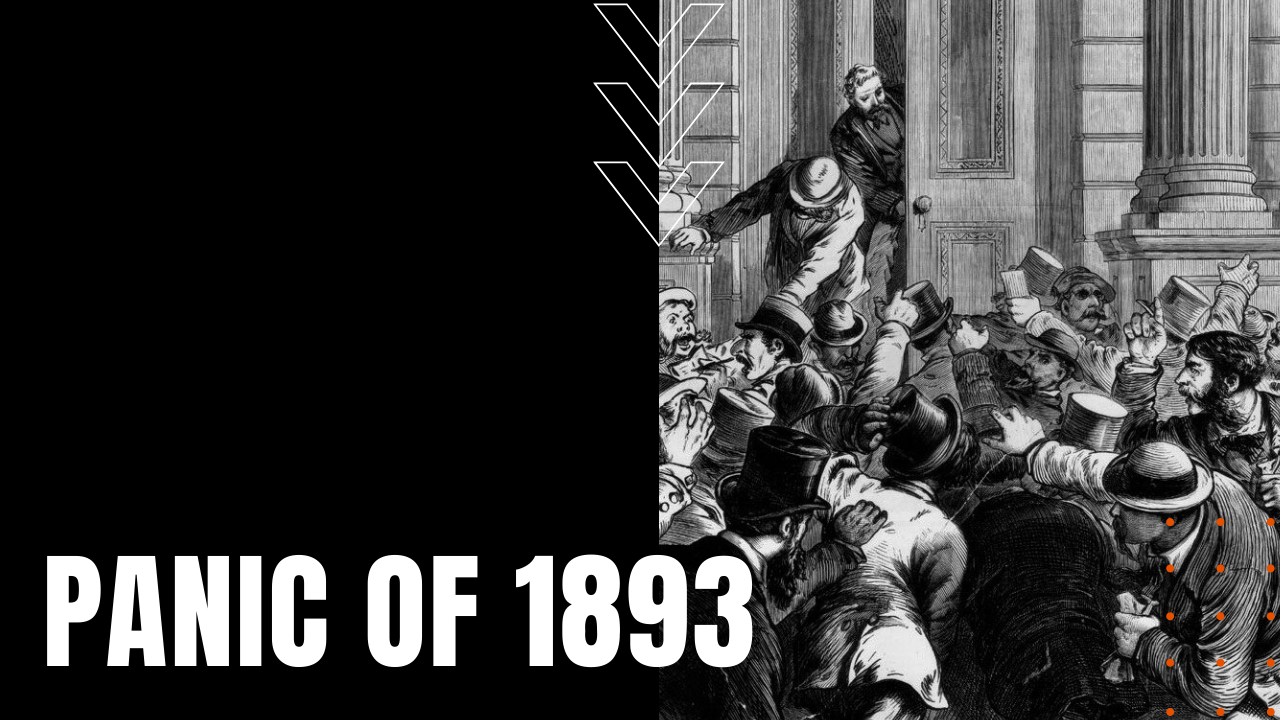Panic of 1893

After two decades of robust Gilded Age growth and prosperity—including an oversupply of silver due to a massive strike in Nevada’s Comstock Lode, as well as gross overreach in the American railroad industry—a confluence of disastrous events led to the Panic of 1893, effectively crushing the American economy and the American spirit, with a stunning cascade of bank failures, bankruptcies and foreclosures, not to be equaled until the Great Depression of the 1930s.
President’s Worst Nightmare
Troubles began on February 20th, 1893, just twelve days after President Grover Cleveland was sworn into office, when the Philadelphia and Reading Railroad followed by the National Cordage Company—two of the nation’s largest employers—filed for receivership, while the lingering effects of a wheat crop failure and an unsuccessful coup in Argentina encouraged skittish European investors to sell their American stock holdings, which in turn started a run on gold in the U.S. Treasury, since specie or coins made of precious metals were deemed safer than paper money.
Sherman Silver Purchase Act
Convinced that an oversupply of silver was at the heart of the crisis, Cleveland convinced Congress to repeal the Sherman Silver Purchase Act of 1890, creating a credit crunch that rippled throughout world economies. As stock prices on Wall Street began their precipitous tumble, a domino effect of financial collapses soon followed, including bankruptcies for the Northern Pacific and Union Pacific Railroads, the Atchison, Topeka & Santa Fe Railroad, 500 regional and national banks and more than 15,000 companies across the United States.
Four Years of Depression
At the depression’s peak, which dragged on until 1897, unemployment reached 17 to 19% nationally, with some states reaching even higher figures such as 35% in New York and 43% in Michigan, causing once-secure middle-class Americans to walk away from home mortgages they could no longer afford. Facing starvation, many in the fallen middle-class accepted manual labor jobs in exchange for food, while many women resorted to prostitution as a meanings of feeding hungry children back home. The American president took the brunt of a struggling nation’s blame, and when the U.S.
President Fall Guy
Treasury fell to dangerously low levels of specie, he was forced to borrow $65 million from Wall Street banker J.P. Morgan and Great Britain’s Rothschild banking family. Combined with the bloody Pullman Strike of 1894, Cleveland’s Democratic party suffered massive losses in the mid-term elections of 1894, followed by Republican President William McKinley’s landslide victory in the presidential election of 1896, making the Panic of 1893, another worst hard time in American history.
